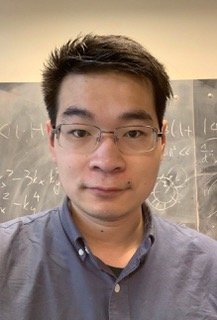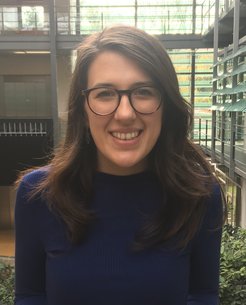Otto-Hahn-Medaille for Veronika Sunko and Yang Zhang
Yang Zhang of the Solid State Chemistry department and Veronika Sunko of the Physics of Quantum Materials have each been awarded the Otto Hahn Medaille of the Max Planck Society for their outstanding doctoral research.
Yang Zhang has been honoured for the development of a novel theoretical concept that was used to calculate and predict new topological materials for efficient energy conversion. Topological Weyl semimetals are a class of recently discovered semi-metals with band crossings close to the Fermi energy. Yang’s new theoretical concept has led to the prediction and realization of giant responses in several properties: the Nernst effect, that is important for thermoelectric devices; the Hall effect, that is important for Hall sensors and spintronic devices; and quantum optical effects that are important for new types of efficient solar cells. To achieve this goal, Yang developed and implemented a Kubo based formalism using first-principles derived Wannier wave functions. Via high-throughput calculations, he identified a series of materials with predicted properties more than an order of magnitude larger than known materials. The measured transport and optical properties of these materials are in excellent agreement with his predictions, the giant responses based on Weyl crossings. Yang Zhang is a truly extraordinarily talented young scientist, who is brilliant and of high productivity and originality. At the defense of his thesis, he was only 25 years old. He is now performing post-doctoral research at MIT.
Veronika Sunko’s remarkable PhD research has already been recognized with several awards (see previous news items from 7 October and 15 November 2019). The Otto Hahn Medaille is another well-deserved accolade. It was awarded for her work on angle resolved photoemission spectroscopy of the delafossite family of layered triangular lattice oxide metals. These remarkable metals have some of the highest conductivities of any known materials, and Veronika's spectroscopic investigations provided deep insight into the reasons why they conduct so well, as well as on exotic magnetic physics involving conduction electrons both in the bulk and on the surface. In addition to her long and growing list of thesis prizes and awards, Veronika has won a prestigious Miller Fellowship from UC Berkeley, providing three years of salary, research and travel funding for post-doctoral research. She will carry this out both at UC Berkeley and at the neighbouring Lawrence Berkeley National Laboratory, principally in the group of Professor Joseph Orenstein.
Warmest congratulations to Veronika and Yang for their truly outstanding work!
APM (PQM) & CF (FKC) / CPfS



